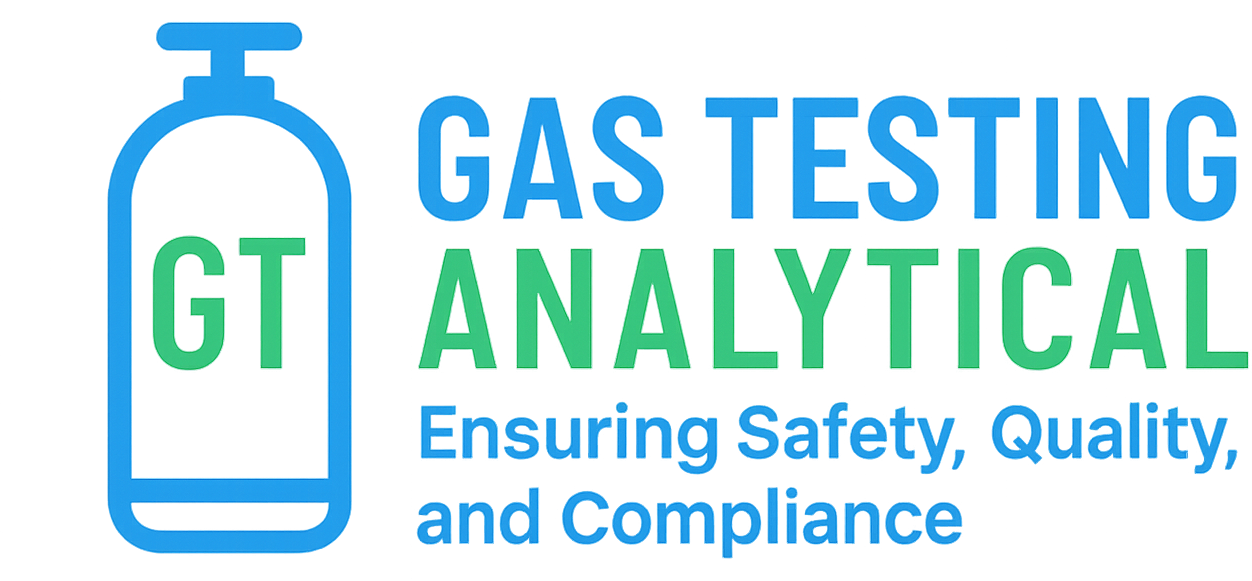Overview
Nitrous oxide serves multiple roles in pharmaceutical manufacturing, from its traditional use as an anesthetic agent to specialized applications in chemical synthesis, propellant systems, and analytical instrumentation. Its unique properties require careful monitoring and quality control to ensure safety and efficacy.
Applications in Pharmaceutical Manufacturing
- Anesthetic Gas – Medical and dental anesthesia applications
- Propellant Gas – Aerosol formulations and pressurized dispensing systems
- Chemical Synthesis – Oxidizing agent for specialized reactions
- Analytical Applications – Flame ionization detector support gas
- Food Grade Applications – Whipping cream dispensers and food packaging
- Research Applications – Laboratory synthesis and process development
Quality Specifications
Medical Grade Nitrous Oxide (USP)
- Identification – Methods A, B, and C
- Nitrous Oxide Content – Not less than 99.0% N₂O by volume
- Water Vapor – Not more than 150mg/m³
- Air – Not more than 1.0%
- Carbon Monoxide – Not more than 0.001%
- Carbon Dioxide – Not more than 0.03%
- Ammonia – Not more than 0.0025%
- Nitric Oxide – Not more than 1 ppm
- Nitrogen Dioxide – Not more than 1 ppm
- Halogens – NMT 1ppm
Food Grade Nitrous Oxide
- Purity – 99.5% minimum N₂O content
- Oxygen – <1000 ppm
- Nitrogen – <5000 ppm
- Carbon Dioxide – <300 ppm
- Carbon Monoxide – <10 ppm
- Moisture – <100 ppm H₂O
- Oil and Grease – Not detectable
- Sulfur Compounds – <1 ppm as H₂S
Technical Grade Nitrous Oxide
- Purity – 98.0% minimum N₂O content
- Total Impurities – <2.0%
- Non-condensable Gases – <1.0%
- Moisture – <200 ppm H₂O
- Particulate Matter – <1 mg/m³
- Halogenated Compounds – <10 ppm total
Sample Handling Equipment
- Pressure Regulators – Two-stage regulation for stable pressure
- Sample Conditioning – Temperature control and moisture removal
- Flow Controllers – Mass flow controllers for reproducible sampling
- Sample Valves – Multi-port valves for automated sampling
- Particulate Filters – High-efficiency filtration for system protection
Medical Gas Applications
Anesthetic Gas Monitoring
Operating Room Requirements:
- Concentration Monitoring – Real-time N₂O concentration measurement
- Scavenging Systems – Waste anesthetic gas removal and monitoring
- Leak Detection – Continuous monitoring for system leaks
- Alarm Systems – High/low concentration alarms
- Data Logging – Continuous recording for compliance documentation
Gas Delivery Systems:
- Flow Control – Precise flow measurement and control
- Pressure Monitoring – System pressure monitoring and alarming
- Temperature Compensation – Correction for temperature effects
- Calibration – Regular calibration with certified reference gases
- Maintenance – Preventive maintenance scheduling and documentation
Safety Monitoring
Occupational Exposure Limits:
- NIOSH REL – 25 ppm (8-hour TWA)
- OSHA PEL – No established limit (follow NIOSH recommendation)
- ACGIH TLV – 50 ppm (8-hour TWA)
- Personal Monitoring – Badge samplers for personal exposure assessment
- Area Monitoring – Fixed monitors in work areas
Environmental Controls:
- Ventilation Systems – Adequate ventilation to control exposure
- Scavenging Systems – Capture and removal of waste gases
- Leak Prevention – Regular system inspection and maintenance
- Emergency Procedures – Response protocols for high concentration exposure
- Training Programs – Personnel training on safe handling practices
Propellant Applications
Aerosol Formulations
Quality Requirements:
- Propellant Purity – Food or pharmaceutical grade specifications
- Moisture Control – <50 ppm to prevent formulation degradation
- Residue Testing – Non-volatile residue <10 mg/100g
- Valve Compatibility – Compatibility with elastomeric components
- Pressure Testing – Vapor pressure measurement at specified temperatures
Formulation Considerations:
- Solubility Parameters – N₂O solubility in active ingredients
- Phase Behavior – Liquid/vapor equilibrium in formulation
- Stability Studies – Chemical and physical stability over shelf life
- Extractables/Leachables – Container closure system interactions
- Microbiological Quality – Bioburden and sterility requirements
Dispensing System Applications
- Whipped Cream Dispensers – Food service and commercial applications
- Medical Devices – Pressurized drug delivery systems
- Laboratory Equipment – Pressurization for liquid chromatography
- Process Equipment – Pressure testing and system commissioning
- Packaging Systems – Modified atmosphere packaging applications
Analytical Applications
Flame Ionization Detector Support
GC-FID Applications:
- Support Gas Function – Enhanced detector response for certain compounds
- Flow Rate – 30-40 mL/min typical flow rate
- Purity Requirements – <10 ppm total hydrocarbons
- Pressure Control – Stable pressure regulation for reproducible results
- Safety Considerations – Proper ventilation and leak detection
Detector Optimization:
- Gas Ratios – Optimized N₂O:H₂:Air ratios for maximum sensitivity
- Temperature Control – Detector temperature optimization
- Baseline Stability – Minimal drift and noise
- Response Linearity – Linear response over analytical range
- Maintenance – Regular cleaning and component replacement
Safety and Regulatory Considerations
Safety Hazards
Physical Hazards:
- Asphyxiation Risk – Oxygen displacement in confined spaces
- High Pressure – Cylinder and system pressure safety
- Cryogenic Effects – Rapid expansion cooling effects
- Fire and Explosion – Oxidizing properties under certain conditions
Health Hazards:
- Anesthetic Effects – CNS depression at high concentrations
- Chronic Exposure – Potential reproductive and neurological effects
- Occupational Limits – Compliance with exposure limits
- Medical Surveillance – Health monitoring for exposed workers
Regulatory Compliance
Medical Device Regulations:
- FDA 21 CFR 868 – Anesthesiology devices and accessories
- ISO 11195 – Medical gas pipeline systems requirements
- CGA Guidelines – Compressed Gas Association safety standards
- NFPA 99 – Health care facilities gas systems
Food and Drug Regulations:
- FDA 21 CFR 184.1545 – GRAS status for food applications
- USP <1151> – Pharmaceutical dosage forms requirements
- ICH Q3C – Residual solvents guidelines
- cGMP Requirements – Current Good Manufacturing Practice compliance
Environmental and Sustainability Considerations
Environmental Impact
- Greenhouse Gas Potential – N₂O is a potent greenhouse gas (GWP ~298)
- Ozone Depletion – Contribution to stratospheric ozone depletion
- Emission Control – Catalytic destruction of waste N₂O
- Recovery Systems – N₂O recovery and recycling where feasible
- Leak Prevention – Minimizing fugitive emissions
Sustainability Initiatives
- Process Optimization – Reducing N₂O consumption through efficiency
- Alternative Technologies – Evaluation of alternative gases/processes
- Waste Minimization – Process improvements to reduce waste generation
- Life Cycle Assessment – Environmental impact evaluation
- Regulatory Compliance – Meeting environmental regulations


